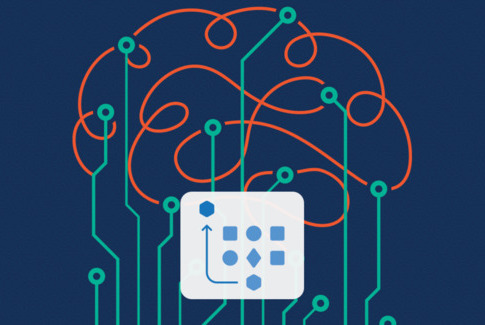
Do you enjoy a good mental challenge? If you’re like me, no day is complete without one. While there are many games to choose from, only one truly tests the complexity and nuance of the human language: the crossword puzzle.
Invented in 1913, the crossword puzzle has become a daily staple for many around the world. It presents a unique challenge of language understanding, general knowledge and logical reasoning. This unique combination of attributes does not come easy for most people, and it has never been replicated by artificial intelligence (AI). That is, until now.
Crossword Puzzles Present Unique AI Challenges
The human versus machine narrative is nothing new. It is a captivating phenomenon that demonstrates just how intelligent machines have become in comparison to their human counterparts. And while we have seen AI success in games such as chess and Jeopardy!, crossword puzzles have proven to be a challenge of a different stature.
The core difference between crossword puzzles and a game like chess is that crosswords are dealing with the open domain of language. In other words, a language model has no limit to the type of information it needs to understand. On the other hand, a chess model is based solely upon the data from previously played games. So how was a language model finally able to crack the code of crossword puzzles? Let’s explore.
What Makes WebCrow 2.0 Unique?
WebCrow 2.0 found success because of its ability to replicate the three aforementioned attributes: language understanding, general knowledge and logical reasoning. It was able to do so in part because of the unique approach it took to addressing the challenge.
Understanding
To answer a crossword clue, you first need to understand it. While this is fairly straightforward for the average puzzler, it is the first in a series of challenges for a machine. To accurately interpret a clue, the machine needs to correctly identify the primary concept in it. This establishes context that can then be used to search for the correct answer.
WebCrow uses the expert.ai knowledge graph to understand the clues as they are laid out. This leverages concepts and their pre-established relationships to one another to understand the clue as it is meant to be understood.
Knowledge
While knowledge plays a key role in understanding the clues, it is also central to finding the corresponding answers. WebCrow leverages knowledge from three core sources, each of which serves a valuable role in addressing certain clues.
The expert.ai knowledge graph provides a rich conceptual database for understanding language. With it, WebCrow has established ontologies and lexicon with which it can determine answers to clues. This is most useful when it comes to solving clues that provide a definition. For example, “A supportive kind of column” could double as a definition. In this instance, the knowledge graph can provide possible answers based on concepts that align to the definition.
Human and encyclopedic knowledge from the web is critical when responding to complex clues that are more factual in nature. Consider the clue, “Emilia Jones Best Picture winner”. A knowledge graph does not have the depth of knowledge necessary to solve this clue. Instead, WebCrow can perform a web search to locate articles that contain the correct answer.
The final source of knowledge leveraged by WebCrow is knowledge gained from prior crossword puzzles. Any regular crossword player can tell you that clues in one puzzle are often recycled in future versions. Therefore, the more puzzles you complete, the more likely you are to have the correct answer to future clues. Using natural language processing (NLP) techniques, WebCrow can do the same by cross-referencing knowledge from prior puzzles to the one at hand.
These three sources of knowledge enable WebCrow to find viable answers to every crossword clue. With those clue options in hand, logic and reasoning can then do the remainder of the work.
Logic and Reasoning
Logic and reasoning are what make crossword puzzles so challenging. Every answer must meet the required letter count and align to corresponding responses. One wrong answer can quickly send you down a path to failure. WebCrow follows a method of belief propagation that accounts for both the probability of the answer being correct along with the constraints created from other answers. This helps the model identify the right answer rather than the best answer.
WebCrow’s unique blend of human and machine capabilities has enabled it to accomplish something never before seen in AI. With crossword puzzles checked off the list, what language-based game will AI take on next?


